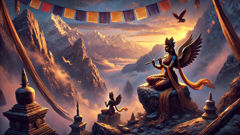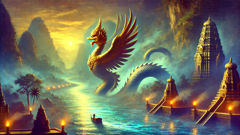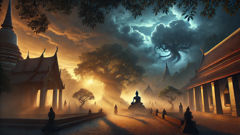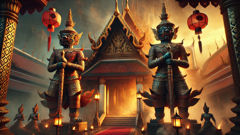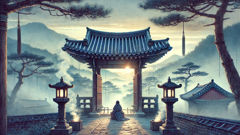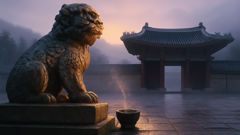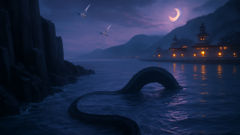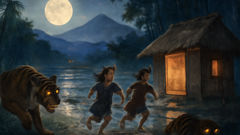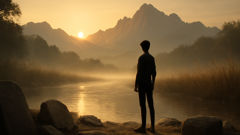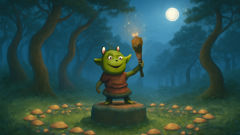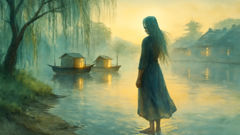Introduction
Low clouds drift across the sky, trailing wisps of mist over the wild Otago coastline. The air is crisp, briny with the promise of rain, and the rolling surf beats a steady rhythm against the stony shore. Here, where the Southern Ocean meets the land in a symphony of sound and spray, the beach stretches wide and pale beneath green headlands. What draws the gaze, though, are the strange and ancient boulders scattered along the sand. Round as moons, smooth as river pebbles, these stones—some the size of a child, some wider than a man’s outstretched arms—seem too perfect, too deliberate, to be the work of mere chance. Their surfaces glisten with dew in the morning, and sometimes, when the tide recedes just so, they appear to have emerged freshly from the earth, as if ancient giants had rolled their marbles out to play. These are the Moeraki Boulders, treasures of stone whose origins are whispered in Maori legend. Locals call them kai hinaki—the eel baskets, food baskets, and water gourds of a vanished voyage. For centuries, the Ngai Tahu people have told stories of the Arai-te-uru waka, the ancestral canoe that sailed from Hawaiki to these distant shores. They say that in the throes of a mighty storm, the canoe was dashed upon the rocks, and its precious cargo—woven baskets filled with eels, gourds of water for the journey, calabashes brimming with food—were thrown overboard. The gods, moved by the fate of the crew, turned these baskets and gourds to stone so their memory would endure. Today, each rounded boulder on the Otago coast stands as a marker of this legend: a vessel from the past, carrying not just food, but stories, hope, and a sense of belonging across the restless sea. To walk among the Moeraki Boulders is to step into the echo of ancient journeys, where nature and myth blend into one enduring wonder.
The Arrival of the Arai-te-uru Waka
Long before foreign sails cut through the Southern Ocean, and before English names marked the land, Aotearoa was known only to the birds, the winds, and the people of the first canoes. Among these voyagers was a great waka, the Arai-te-uru, her hull carved with swirling motifs and her prow pointing south from the legendary homeland of Hawaiki. The ancestors who crewed her were a people of vision—navigators by the stars, readers of cloud and current, dreamers who trusted the promise of distant green shores.
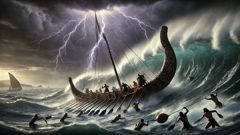
The Arai-te-uru was commanded by an elder named Kähukura. Wise and weathered, Kähukura was chosen for his knowledge of the waves, his voice strong in both ceremony and storm. With him sailed his kin—women weaving baskets, men sharpening fishing tools, children clutching dried kumara and watching the flying fish leap beside the canoe. The waka was laden with precious cargo: tightly woven eel baskets, gourd vessels filled with water, baskets of kumara and taro, sacred stones, and taonga wrapped in flax.
For weeks, the crew of Arai-te-uru followed the long white cloud. The night sky was their map, the ocean’s mood their guide. They sang songs to appease Tangaroa, god of the sea, and told stories to honor the spirits they had left behind. Sometimes dolphins escorted their journey, leaping through moonlit spray; sometimes they sailed in solemn silence, each stroke of the paddle a prayer.
As they neared the southern lands, a restless wind began to rise. Clouds gathered thick and low, the horizon blurred into grey. Kähukura sensed a warning in the air—a hush before the storm that would change their fate forever. He stood at the prow, lifting his arms in a karakia, imploring the atua for safe passage. But the ocean had another plan. The sky erupted with thunder, and rain hammered the waka as monstrous waves heaved from the depths. The Arai-te-uru bucked and groaned. Water sloshed over her sides, soaking woven baskets, loosening knots. In the chaos, a shout went up—the hull was leaking, the prow splitting against unseen rocks.
The crew scrambled to save what they could. Women hugged children close, men braced oars and bailed water with cupped hands. But the storm was relentless. One by one, baskets of eels and kumara were wrenched from the deck, tumbling into the wild foam. Gourds and calabashes rolled into the surf, spinning away into darkness. With a final crack, the canoe lurched and broke apart upon a hidden reef—shards of wood mingling with sacred taonga in the churning sea.
Some say that Kähukura, in his last moments, called out to the atua once more. He begged that the memory of his people and their journey not be lost. The gods, moved by his plea and the courage of his kin, answered in a way both mysterious and enduring. Where the baskets and gourds sank, they began to change—flesh and flax melting into stone, woven shapes hardening into smooth, perfect spheres. The ancestors vanished, but their legacy was etched forever into the land.
The Transformation: From Baskets to Boulders
When dawn crept over the wreckage, the Otago coastline was transformed. The storm had passed, leaving behind an eerie hush, broken only by the cries of seabirds and the distant rush of waves. On the sand, scattered where the canoe had come apart, lay objects that defied explanation: round stones, some cradled in shallow pools, others gleaming wet in the new light.
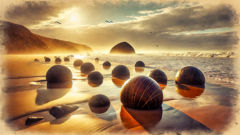
At first glance, these boulders seemed unnatural—too perfectly shaped, as if molded by a giant’s hand. The oldest among the Ngai Tahu, peering from the forest’s edge, recognized them for what they were: the remnants of the Arai-te-uru’s cargo. Here was a basket of eels, its weave now petrified into stone; there a water gourd, smoothed and solidified by divine magic. Each boulder marked where a precious item from the waka had landed, a permanent testament to the journey and loss of the ancestors.
The people approached with reverence. Children reached out to trace the lines where basket weaves had once been, feeling the cold smoothness beneath their fingers. Elders sang soft chants, voices mingling with the wind as they recounted the story of the waka’s voyage and its tragic end. Some boulders, they noticed, bore faint cracks and hollows—echoes of the handles, lids, and woven patterns that once defined them. It was as if the earth itself had taken pity, memorializing the voyagers’ hopes in the only way it knew.
Over time, the legend of the Moeraki Boulders grew. Travelers came from distant iwi, curious to see the stones and pay their respects. They brought offerings—flax flowers, woven mats, small carvings—laying them at the base of the largest spheres. At night, under a canopy of stars, young storytellers would gather to recount the voyage of Arai-te-uru, their words painting pictures of storm-tossed seas and gods who could turn sorrow into stone.
Seasons changed. Grass grew thick on the headlands, and seabirds nested among the rocks. Yet the boulders remained, untouched by time or tide. Even when great earthquakes rattled the land, or when the ocean advanced in fury, the stones endured. They became not just a symbol of loss, but of survival—the promise that memory can outlast even the fiercest storm.
Guardians of Memory: The Boulders Through Generations
Years slipped into centuries, and the coastline shifted as all coasts do—beaches narrowed, dunes grew tall, and tides rose and fell in their endless dance. Yet the Moeraki Boulders remained. Each generation of Ngai Tahu looked upon them with fresh eyes, finding new meaning in their ancient forms.

Children grew up with stories of the Arai-te-uru and its crew. Grandparents would take them by hand to the beach at low tide, pointing out which boulder was once a kumara basket, which had held eels for a feast. The smoothest stones became seats for storytelling. At sunrise, elders would gather to offer prayers, thanking the atua for preserving both memory and place. For some, the boulders were guardians: silent watchers who kept sorrow at bay and reminded the people of their roots. For others, they were teachers, instructing each new generation in the values of resilience and respect for nature.
Not all lessons were easy. Sometimes storms would roll in from the south, threatening to reclaim the stones or scatter them anew. In such times, the people would band together to repair eroded dunes or clear debris from the sacred beach. It was understood that caretaking was part of their inheritance—an ongoing bond between land, sea, and story.
Wider recognition came with the arrival of European explorers. Early sailors and settlers marveled at the boulders’ symmetry, scribbling sketches in their journals and inventing theories about their formation. But for Ngai Tahu, the truth needed no scientific explanation. The stones belonged to the ancestors, woven into the fabric of the land. Even as English names appeared on maps and roads carved up forests, the legend endured. Schoolchildren recited it in classrooms; artists painted it in swirling patterns; carvers inscribed it into wood and bone.
Through all these changes, the Moeraki Boulders stood firm—a bridge between worlds, a living archive of hope and heartbreak. And when travelers knelt beside them, feeling the cool surface beneath their palms, they too became part of the legend, carrying the story onward, pebble by pebble, into a future yet unwritten.
Conclusion
Even today, when winds howl over the Otago coast and rain sweeps in from the sea, the Moeraki Boulders keep silent watch over the shore. Tourists marvel at their shape; geologists debate their age; photographers strive to capture their magic at dawn or dusk. But for those who listen closely, who walk barefoot in the chill surf and feel the round stones beneath their feet, there is another truth waiting—one whispered in the language of waves and wind. It is a truth older than science, rooted in memory and shaped by myth: that the land remembers, and so do its people. The boulders are not just stones; they are storytellers, bearing witness to journeys both ancient and ongoing. In their silence lies endurance, in their symmetry a quiet grace. To visit them is to step into a world where every stone is a story, every ripple a reminder that nature and legend are forever entwined. And so, as each new tide sweeps across the sand, it is said that Kähukura and his crew live on—not as shadows in the past, but as guardians of the present, their tale carved into the coast for all who care to see.


